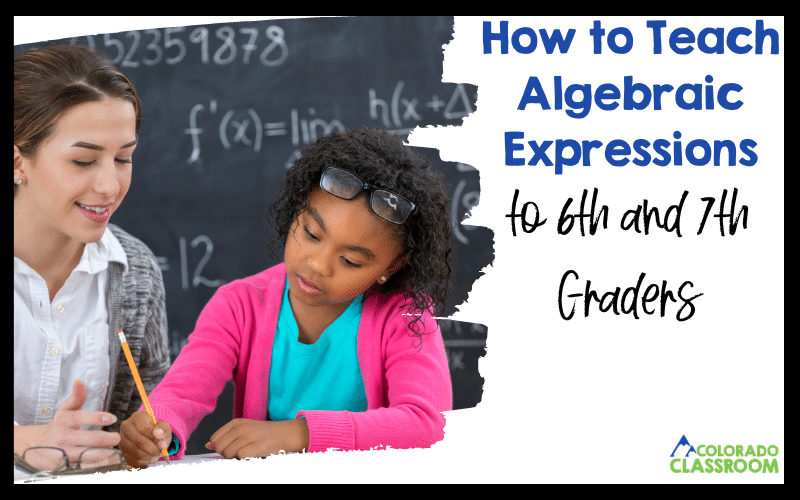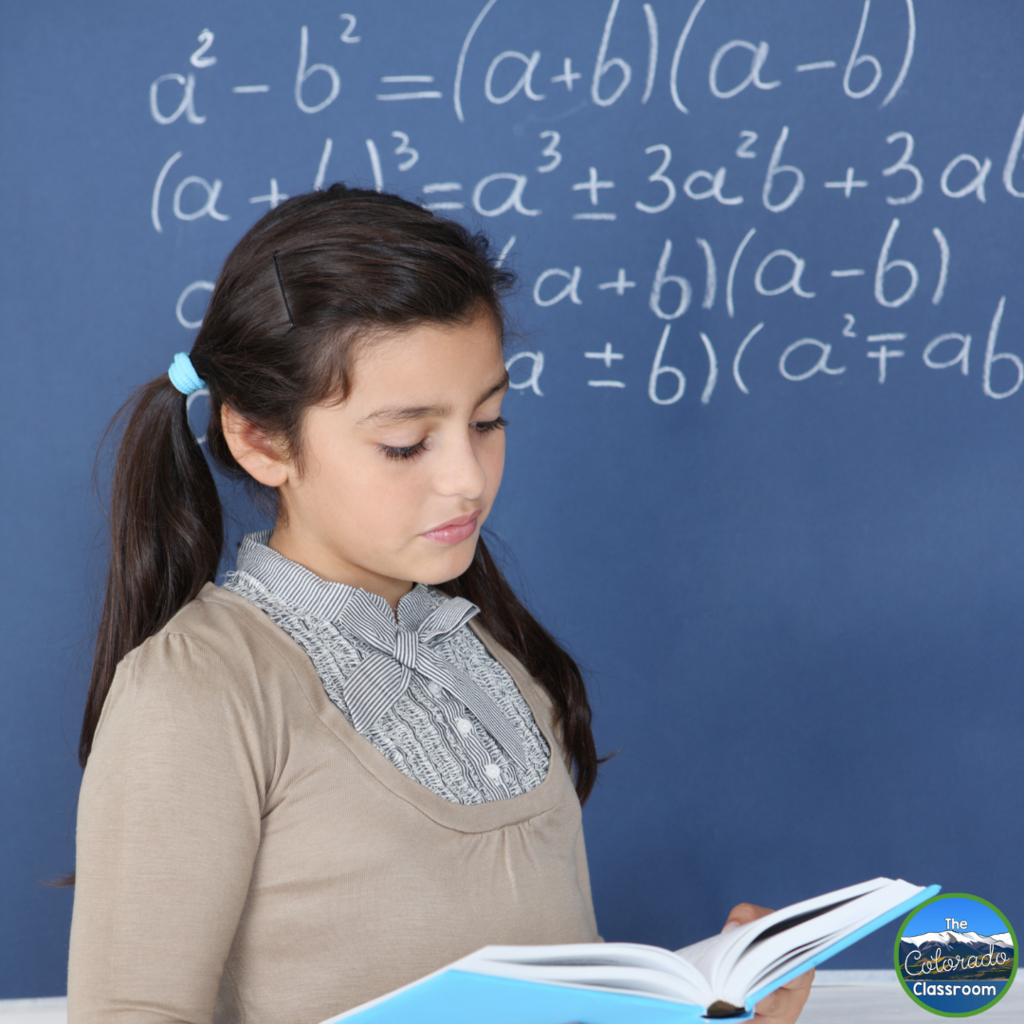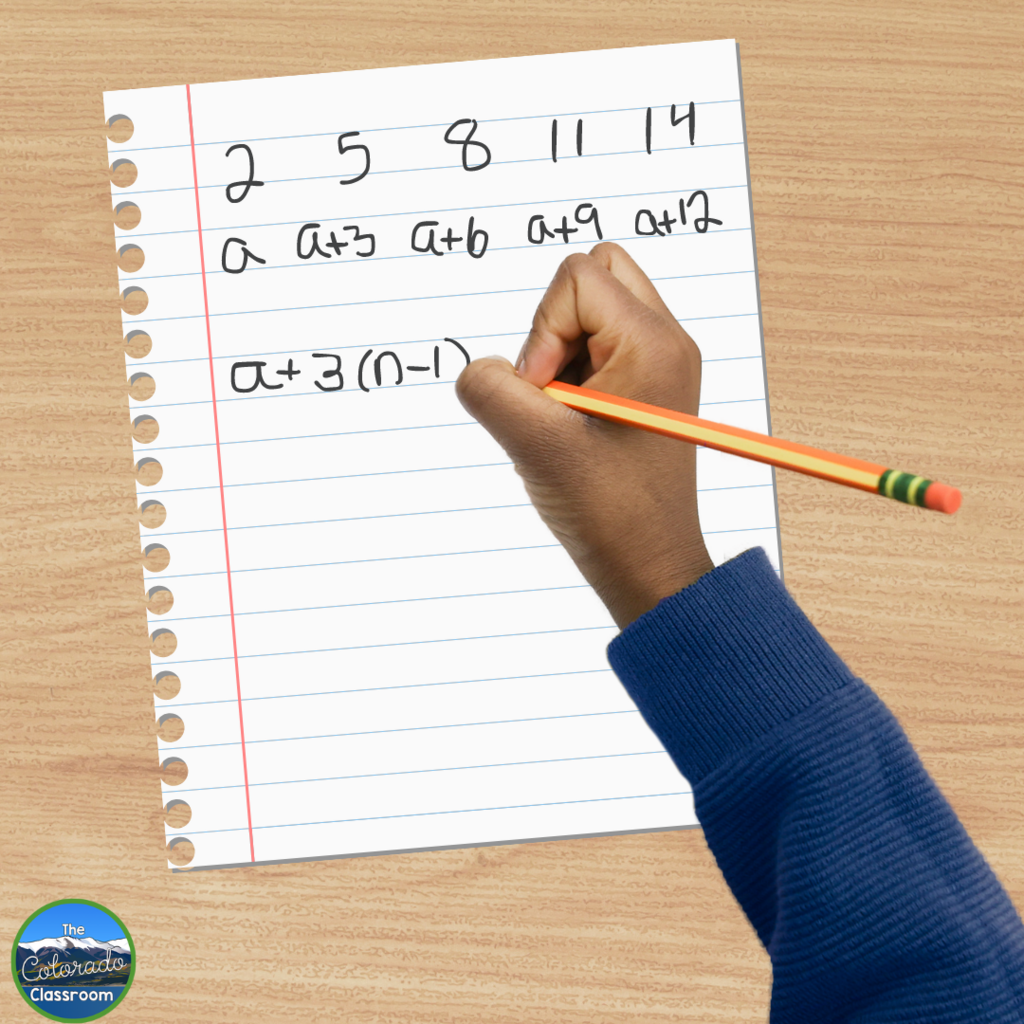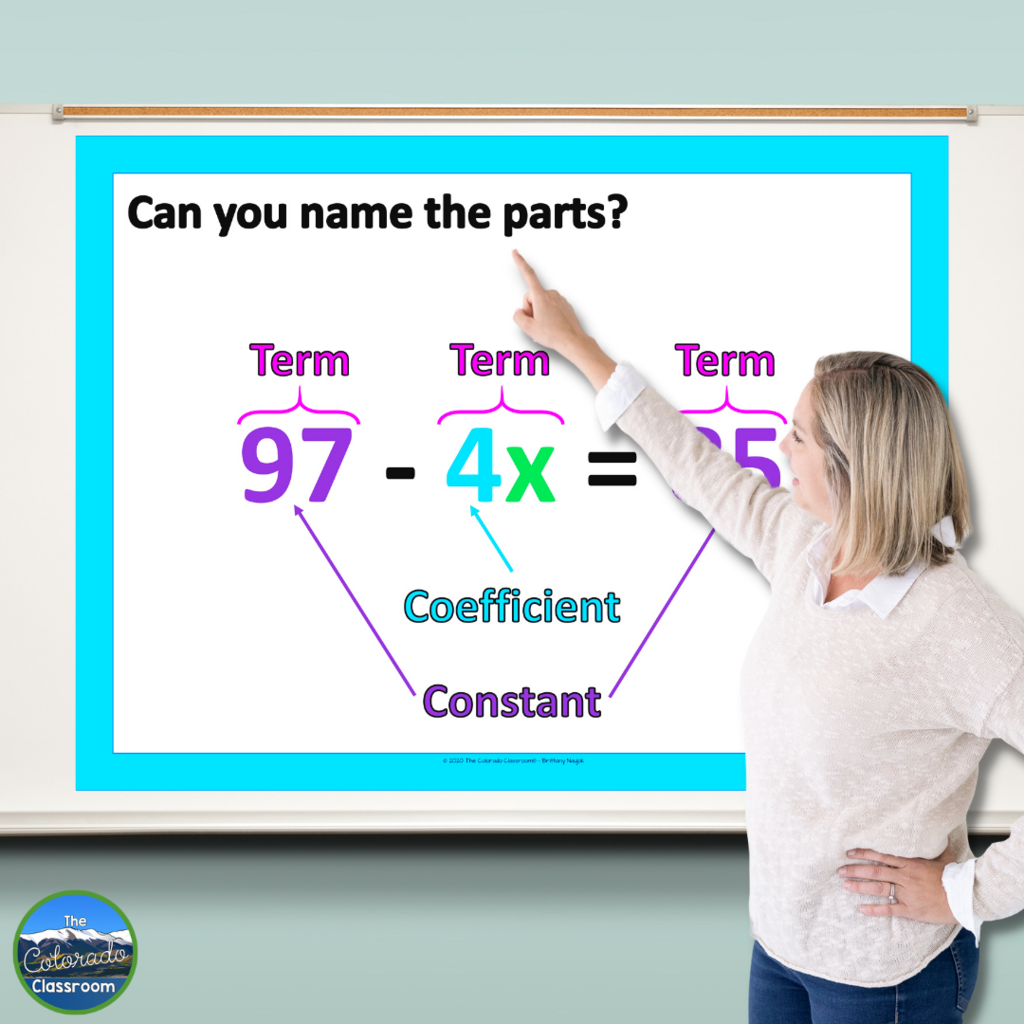How to Teach Algebraic Expressions to 6th and 7th Graders
Have you ever found yourself pleasantly surprised by something you created for a colleague or friend? That’s exactly how I feel about my Algebraic Expressions resource! A teammate needed help to navigate the ins and outs of teaching this concept. Been there, done that! I knew that feeling well. So, I decided to whip up a one-stop shop resource to help others learn too! It’s got a teacher packet to steer you in the right direction, a student packet for seamless learning, and a digital version for that extra dose of engagement! Ready to dive into the world of algebraic expressions? Let’s explore this resource together!

Importance of Learning Algebraic Expressions
One thing I have in common with my students is that I want to know the “why” behind what we do. It helps me to have buy-in for what is expected of me. At the end of the day, we want all of our students to be invested in their learning. That begins with telling them the why behind what they’re learning!

Algebraic expressions serve as the gateway to providing a deeper understanding of various math concepts. Embracing these expressions is not just about solving equations. It’s about gaining a tool that opens doors to understanding economics, trigonometry, statistics, calculus, and beyond.
Understanding algebraic expressions empowers our young mathematicians to navigate real-world challenges with confidence. From deciphering economic trends to analyzing revenue costs, algebraic expressions offer a framework for problem-solving in realistic scenarios. In trigonometry, algebraic expressions help us to unravel the mysteries of missing angles and their values. Statistics, often viewed as a labyrinth of data, becomes more approachable with the aid of algebraic expressions. They allow us to unveil patterns, analyze trends, and make informed decisions based on numerical insights.
Algebra not only exposes the complexity of math but also serves as a testament to the ability to conquer challenging concepts through knowledge and practice. Algebra helps our learners to develop a resilient mindset. It teaches them that while math may be tricky, we can navigate it by building a strong foundation of knowledge and engaging in consistent practice.
Navigating Mathematical Standards with Algebraic Expressions
Let’s talk about how diving into algebraic expressions isn’t just about equations. It’s a journey that aligns perfectly with the Standards for Mathematical Practice. These standards are our roadmap to developing mathematical thinkers and problem solvers. Here’s how algebraic expressions help us hit those key points.
Making Sense of Problems and Persevering

Let’s chat about algebraic expressions and their role in problem-solving. When it comes to these problems, it’s about diving into them, making sense of them, and sticking with them until they are solved.
They’re not meant for students to rush through them. They encourage our students to take their time and think through the process. When we throw a problem their way, we encourage them to look beyond the surface. They need to recognize patterns and understand the problem on a deeper level.
Algebraic expressions prompt us to think critically rather than simply crunching numbers. Let’s not forget the importance of sticking with it. Algebraic expressions teach our students that the real magic happens when we persist. This fosters resilience and instills a mindset that values the learning process just as much as the solution.
Reasoning Abstractly and Quantitatively

In the realm of algebraic expressions, fostering abstract and quantitative thinking becomes a cornerstone for developing well-rounded math skills. Abstract thinking encourages learners to perceive the overarching structure and relationships within expressions. It empowers them to approach problems by recognizing patterns and formulating general strategies applicable across various scenarios. On the other hand, quantitative thinking involves precise numerical details. This ensures our learners grasp the specific measurements and quantities represented in algebraic expressions.
Algebraic expressions provide the best stage for this cognitive dance. As our students engage with algebraic expressions, they develop an appreciation for the intricate interplay between abstract and concrete thinking. This perspective enhances problem-solving skills and equips them with the adaptability needed to address various math challenges.
Modeling with Mathematics

For Standards for Mathematical Practice #4 – Model with Mathematics, this standard is a major key for algebraic expressions. It’s all about using these expressions as tools to create accurate models that reflect real-world situations.
Imagine you have a jar of jellybeans, and you want your students to figure out how many are inside without emptying the whole jar. Here’s where our algebraic expressions come to the rescue.
They know the total number of jellybeans is some unknown quantity. Let’s call it “J.” Now, let’s say one of them grabs a handful, and there are 10 jellybeans in that handful. They can express this situation with the algebraic expression: J = 10 x (number of handfuls).
Now, we’ve created a model using algebraic expressions. If they took 5 handfuls to empty the jar, they plug that into the expression: J = 10 x 5. They find there are 50 jellybeans in the jar. So, instead of counting each jellybean, your students have used algebraic modeling to figure it out more efficiently.
Looking for and Making Use of Structure and Repeated Reasoning
Our next two standards, looking and making use of structure and looking for repeated reasoning, go hand in hand with each other. Imagine you have a sequence of numbers: 2, 5, 8, 11, 14, … and your students want to figure out the rule governing these numbers.

Here’s where algebraic expressions come into play. They observe that each number is 3 more than the previous one. Now, let’s use algebra to express this pattern. If we call the first number in the sequence “a,” the second number can be represented as “a + 3,” the third as “a + 6,” and so on. In algebraic terms, the unknown number in the sequence can be expressed as “a + 3(n-1).”
Algebraic expressions help us see the structure and recognize the pattern within the sequence. The “3” represents the constant difference between each term, allowing us to understand the relationships and predict future terms in the sequence. The n-1 refers to the preceding term’s position in the pattern. So, when we talk about using algebraic expressions to look for and make use of structure, it’s about grasping the underlying patterns that connect them.
Now, here’s where we get into the rhythm of mathematics. Algebraic expressions aren’t just about solving a single problem. They’re about recognizing the pattern, developing strategies, and applying them consistently.
How I Teach Algebraic Expressions
Teaching algebraic expressions involves laying a solid foundation through clear definitions and engaging methods. I begin by ensuring that students have a firm grasp of fundamental terms, such as equations, expressions, constants, coefficients, like terms, and algebraic expressions. This initial phase is crucial, as understanding these concepts is like learning the language of algebra.

Once the groundwork is set, I introduce a method that, while not groundbreaking, has proven effective in my teaching journey. I emphasize the mantra, “Whatever you do to one side, you have to do to the other,” turning it into a collective chant with the students. This simple yet powerful principle helps demystify the process of manipulating equations, especially when aiming to isolate variables. An example of this in action would be if we subtract 3 from one side, we subtract 3 from the other side, maintaining the balance of the equation.
The learning experience then transitions into a more interactive phase. I introduce manipulative tools, like tiles, to aid students in visually grasping the concepts. This hands-on approach extends to tasks like writing expressions and equations and identifying terms, coefficients, and constants. The goal is to build a tangible understanding of the abstract algebraic concepts. As students progress, they dive into inverse operations, a crucial step in solving algebraic operations even at the beginner level.
To cater to diverse learning styles, the lesson provides both traditional paper worksheets and a digital version. The digital resources, including a version for teachers to display on a smartboard, allow for a dynamic and collaborative classroom environment. Students can actively participate, manipulating tiles, solving problems, and writing down terms for the entire class to observe and learn collectively.
To assess comprehension, the lesson incorporates a Google Forms quiz. This provides a quick and efficient way to gauge students’ understanding. Plus, easy grading on our end! For those seeking a more visual understanding or a preview of the lesson, make sure to take a look at my video Algebraic Expressions Lesson and Practice. This video gives a great preview of what the resource holds and how it can be interactive for both you and your students!
This resource creates a teaching approach that intertwines traditional and digital methods. It emphasizes hands-on activities and interactive tools to create a comprehensive learning experience. It aims to demystify algebraic expressions, making them accessible and engaging for our students!
Algebraic Expressions Made Easy!
In wrapping up our exploration of teaching algebraic expressions, I want to emphasize how this journey transforms the seemingly complex topic into an approachable one for our students. By laying down a foundation with clear definitions and infusing interactive methods, I’ve witnessed the abstract world of algebra becoming tangible and engaging for my learners. The collective chant of “Whatever you do to one side, you have to do to the other” has not only simplified equations but also fostered a sense of camaraderie among my students.
The inclusion of manipulative tools, paper or digital formats, ensures that learners of all styles actively participate in the learning process. Algebraic expressions stand not as intimidating challenges but as friendly milestones on our math journey. Through this holistic and interactive approach, learning becomes not only educational but also enjoyable. This helps us to create a positive and empowering experience for our students as they navigate the fascinating realm of algebraic expressions.
Save for Later
Remember to pin this post to your favorite math Pinterest board for when you are ready to teach algebraic expressions to your students!



